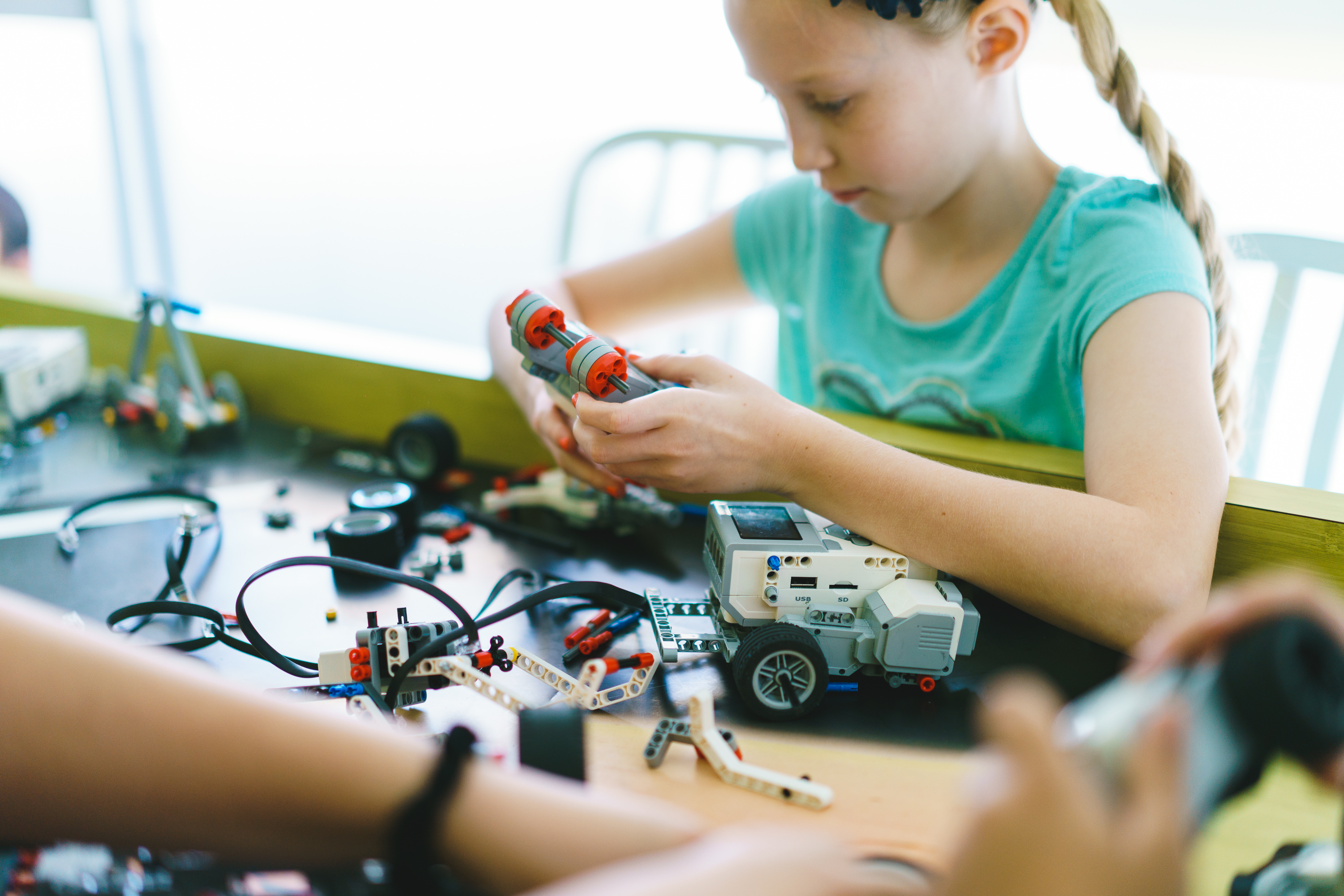Semesters
Be a Scientist. Coder. Engineer. Designer. And Explorer. Prepare your child for today’s world with one of our curriculum-based STEAM Courses.
Sign up for a Zaniac Semester…dates and times to fit your schedule!

Save with Zaniac Semester Courses in the Fall and Spring after school. Select a Course below and find a day & time that fits your schedule! Research from the Department of Education shows early exposure to STEAM enrichment has positive impacts across the entire spectrum of learning and contributes to success at school! Gain the skills and confidence needed to thrive in our 21st century world. Zaniac Semester Courses run for three months in the Fall and in the Spring. That’s 18 hours of learning per Course! Classes meet the same day & time each week.
Choose from 7 Courses available in 26 different time slots offered Monday through Friday and Saturdays! Space is strictly limited so Enroll Now to reserve your child’s spot!
Zaniac Semester Features:
- Small class sizes with a 5:1 student to instructor ratio
- Progress through curriculum-based STEAM Programs and gain 21st century skills
- Peer-based instruction from role model instructors
- Make new friends in our fun and safe high-tech campus
- Personal progress reports
Scientists: (Grades K-8) Earth & Space
Surviving the fury of mother nature can be a challenge. Learn what a meteorologist looks at to determine our weather. Explore the powers of our twisting, shaking, moving Earth as we explore the power of tornadoes, hurricanes, earthquakes and volcanoes with hands-on activities and experiments. Can you construct a home that will withstand the fury of mother nature? After exploring our Earth, let’s go into Space! Do you have what it takes to be an astronaut? Join us as we explore space through the eyes of an astronaut! Travel our solar system and participate in real astronaut training activities, including living in space. Explore technologies space scientists and astronauts use, including lunar rovers and robotic arms. Will you be able to survive in space? 18 hours of learning!
Become a coder! Learn programming concepts with Scratch such as sequences, loops, iterative development, and debugging using a modern, block-based approach. Create animations and videos to share with friends and family. In Game Design, learn advanced concepts including variables and adaptability while creating a new game or programming a classic game like Pac Man. create a new game and program classic games like Pac-man. Fosters collaboration. No prior experience necessary. 18 hours of learning!
Python students work with an intuitive, syntax-based language and learn syntax-specific concepts like lists, strings, and conditions. Create the foundation of a functional platform game. Students also learn the basics of Java, a "write once, run everywhere" language. Explore principles like variables, classes, methods, code efficiency, and automation, all while building a text adventure game, a calculator, and more. Coders I or equivalent prerequisite required. 18 hours of learning!
Be an electrical engineer! Get an introduction to levers, inclined planes, pulleys, screws, and complete challenges by building motorized mechanisms in teams. Explore electrical engineering through hands-on exploration and innovation using littleBits™, a system of modules that magnetically snap together to build projects ranging from flashlights to synthesizers. Learn about basic inputs, outputs, analogs, electricity, and more. 18 hours of learning!
In Engineers II, learn the basics of robotics, the scientific method, forces, and design through exploring scientific and engineering concepts. Build and program robotic solutions to defined projects and get introduced to a variety of sensors and motors. Students will understand nature’s influence on the technology and the design of drones. Explore physics and geometry to understand how the anatomy of a drone supports its course of flight and how to program their drone with block programming commands to pilot their drone's flight path. Understand the real-world applications of drone technology, by completing a variety of hands-on challenges. 18 hours of learning!
Discover the A in STEAM and how Art integrates with technology! Get hands-on experience with real-world music production equipment and bring your song ideas to life! Zaniac’s 3D Printing curriculum enables kids to work with cutting edge technology and get immersed in the engineering and design process, printing their own unique and exciting ideas and turning them into a reality. In GarageBand, use a Digital Audio Workstation to learn the basics of musical notation and form. Students work through looping, editing, sound manipulation, and capturing vocals and MIDI instrumentation to create their own music. 18 hours of learning!
In Galaxy, students learn about Earth's oceans and undersea life with the Oceancraft mod, and explore space with the Galacticraft mod. Design and build rockets that travel to the moon, International Space Station, and even Mars. The final class culminates with a team-building space rescue! Kerbal Space Program is a single-player game where kid astronauts explore a whole new universe by creating and managing their own space program. In Zaniac’s Kerbal Space Program course, students explore aerospace engineering and orbital mechanics by designing, testing, and launching airplanes and rockets to complete a series of missions. Through this course they develop critical-thinking and problem-solving skills through experimentation, and unleash their creativity with an iterative design approach.